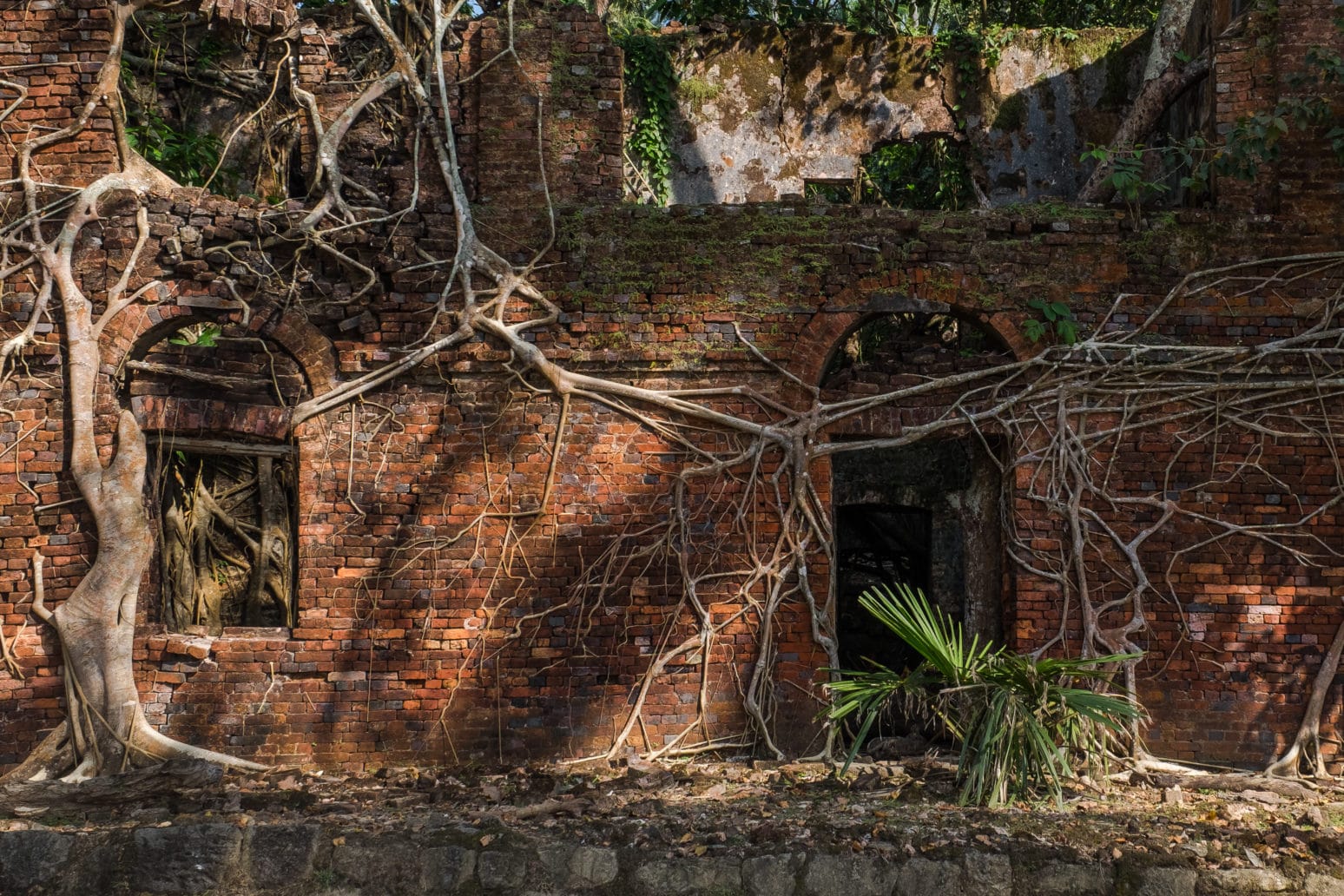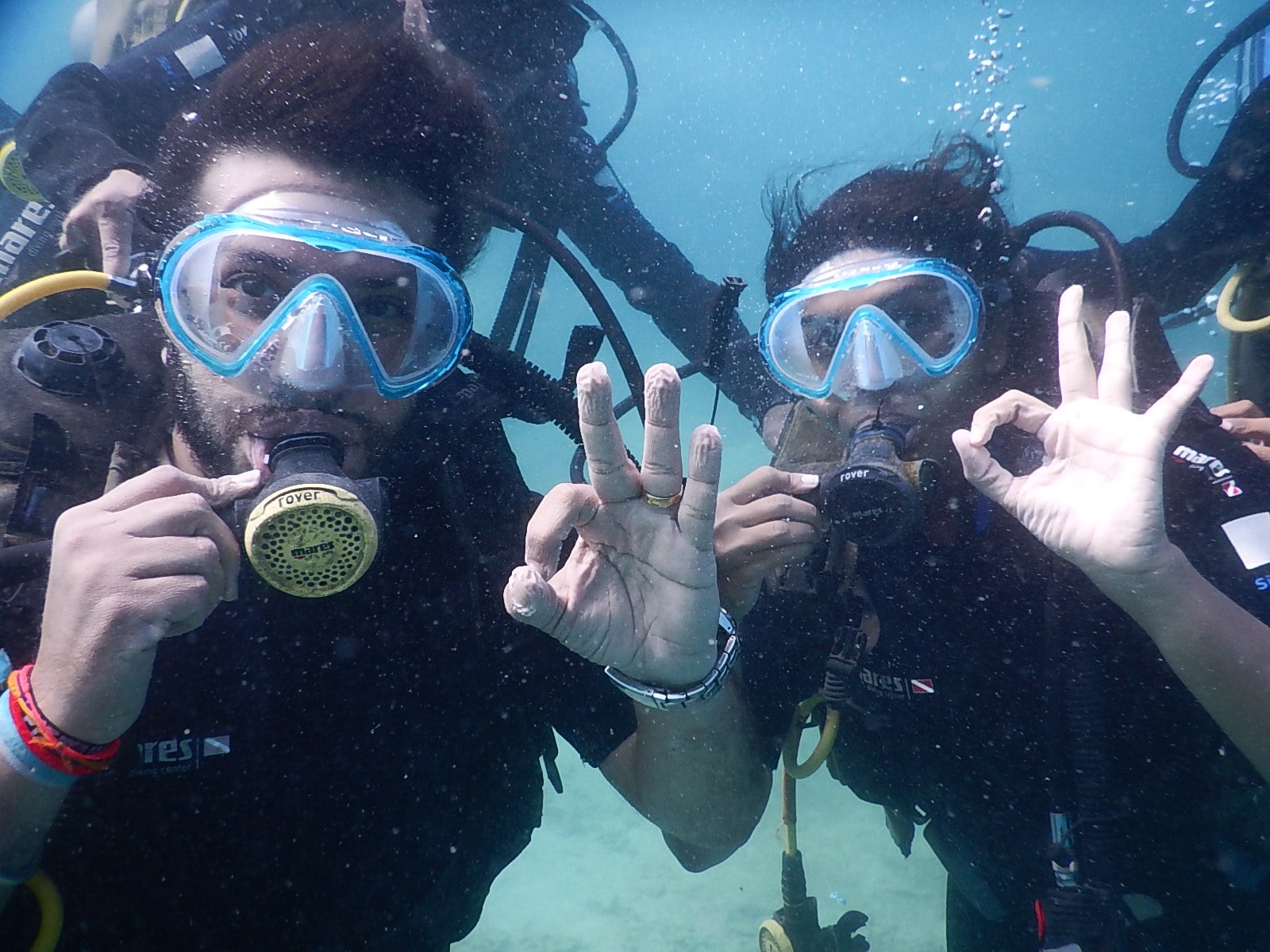The pristine blue-green waters, soft white sand, swaying palm trees and light breezes on the Andaman and Nicobar Islands banish routine life to the far distance. Diving season is coming up and if you’re considering visiting the islands, then here’s a handy guide of all you need to know to make the most of your vacation.
The best time to go
Anytime from November to February is the best time, especially if you want to dive. You can also go in the off-season months to avoid the crowd and have the islands to yourself. Avoid the monsoon as many of the smaller islands are closed and access is limited.
How to get there
There are two ways of getting to Port Blair: you can either take a flight from Chennai or Kolkata or a boat from either city, which takes three days. We suggest avoiding the boat unless you have days to spare and don’t mind the cramped living quarters. Flights to Port Blair can get quite expensive so book early and use those miles.
Here is where it gets tricky: to go from Port Blair to Havelock, the biggest and most popular island in the Andaman archipelago, you have to take one of three ferries, which run at fixed times. If you want to avoid spending time in Port Blair, you have to pick a flight that arrives in time to hot foot it across town to the ferry station. Both the government and Makruzz, a private company, run ferries that leave at 2pm, so you can catch a morning flight and get the afternoon ferry.
Taking the ferry
There are three ferries from Port Blair to Havelock and back. One is run by the government and two are private ones. The schedules for the private ferries, Makruzz and Green Ocean, can be found on their websites, and tickets can be booked online. It is important to carry a print of your ticket as unlike airline and train personnel, the guards at the jetty gate don’t accept e-tickets on the mobile or any other device. Tickets for the government ferry must be booked at the counter and can be bought up to four days in advance. However, the queues for this ferry can be extremely long, so unless you’re a backpacker with days to spare, we suggest you avoid the government ferry. Ferries of all three depart from Phoenix Jetty.

Pottering around Port Blair
There’s enough to do in Port Blair if, being unable to take the ferry out of the city, you have a day to spend. Among the places to explore are the famous Cellular Jail, built by the British for political prisoners, and the Anthropological Museum, which provides a well laid-out overview of the indigenous tribes of the Andaman and Nicobar Islands. We recommend a visit to the museum, even if you are not a museum-loving person, for the terrific collection of black and white pictures and portraits of tribals taken in the early and mid-1900s.
You can also visit Ross Island, easily accessed by ferry from Port Blair. Once the administrative headquarters of the colonial government, the island was captured and used as a base by the Japanese between 1942 and 1945. The island was later retaken by the British and subsequently abandoned after an earthquake caused extensive damage. You can spend an hour walking around Ross, checking out the old Japanese bunkers and remnants of British homes and buildings that were once part of a bustling colony. After decades of neglect, vegetation has reclaimed the island, taking over the existing structures. Deer and peacock roam about.
To dive or not to dive?
It’s a fair question as diving can be expensive and time consuming. If you want to dive but have limited time, we suggest doing the initial diving course where you live, if possible, and then doing the dives on the island. If you have the time, then sign up with one of the several dive companies in Havelock. A typical lesson involves about three days of course work, which comprises theory classes and an exam, and four to five dives, spread over five days, costing anywhere from Rs18,000 to Rs25,000 depending on the number of dives, for the entire course. Of the many options, the most well known ones are Dive India, Barefoot Scuba, Andaman Bubbles and Ocean Tribe. We opted to dive with Ocean Tribe, run by people from the local Karen Tribe, a couple of whom have discovered ship wreck sites and have dive and wreck sites named after them.
If you don’t have the time, money or inclination to take the full course and an exam before you dive, you can always do a few fun dives or DSD (Discover Scuba Dives) for Rs3,500 to Rs4,500, offered by the same companies. Here you get a quick crash course on how to breathe underwater and, more importantly, how not to panic. You dive in tandem with an instructor who manages your equipment and all you have to do is gape and marvel at the marine world.

Where to stay
Havelock, a calmer and more pristine version of Goa, has a number of shacks and places to stay along a stretch of the east side of the island. The beaches here are numbered from one to seven. There are several great options to stay, from the very basic and cheap Sea View Beach Resort, from where Ocean Tribe runs its outfit, (Rs800 per night) to the mid-range Emerald Gecko (from Rs1,499 to Rs2,899 excluding taxes per night), which also runs a popular bar, to the beautiful and luxurious Barefoot at Havelock Resort (cottages cost between Rs9,500 and Rs25,000 per night) at Radhanagar beach (beach seven). Other resorts, like Green Valley at Beach No. 5, where we stayed, has a range of options from Rs300 a night for tin roofed single occupancy rooms without bathrooms to larger air-conditioned wooden huts with attached bathrooms for Rs1,500 per night. Most places charge extra for hot water. If you’re staying for long, you could negotiate a lower price, especially in the off-season months. If you dive with Dive India, the package includes a stay at the charming Island Vinnie’s, on Beach No. 3, where the dive outfit runs their business (standard huts for divers start at Rs500 per night, non-divers can also stay here but only in the Rs3,000 per night tented cabanas).
Where to eat
Thanks to Israeli tourists, backpacker food has found its way to Havelock, and most of it is quite cheap. Among the standard items are banana pancakes, pasta, Maggie and momos. The more popular eating places include Fat Martin Cafe on Beach No. 5. Scattered with black and white photographs of the islands taken a few decades ago by the present owner’s father. It’s a great place to while away the hours with some great vegetarian food, music and a few glasses of their popular cold coffee. If the place is not busy, Martin, the owner, is usually happy to chat up people and answer questions. Full Moon Cafe on Island Vinnie’s on Beach No. 3 is great for breakfast as it offers several organic dishes and fresh juices. Between Beach No. 3 and Beach No. 5, there are several places to eat and drink in varying price brackets.
Exploring Havelock
Much like in Goa, you can zip around the island on rented bikes and scooters. The main town, which is all of 500 metres long, has a couple of grocery stores, a fruit and vegetable market, a place to get fuel, a couple of ATMs, a few roadside eateries, a liquor store and a sports and activities shop from where you can organise boat rides, snorkelling trips, buy swimwear and other assorted equipment. Life here moves at a languid pace and almost everything shuts down for a couple of hours in the afternoon.
Havelock, like the other islands, is heavily forested, and riding around gives you a glimpse into the lives of locals (migrants from Bengal, Tamil Nadu and other parts of the mainland). Radhanagar Beach, on the other side of Havelock, is one of the most beautiful beaches we have seen. Shaped like a crescent moon, the waters are calm and clear, surrounded by high cliffs and forests on three sides.
Beyond Havelock
There are several islands in the Andaman and Nicobar cluster worth exploring. However the exercise takes time and patience as ferries are infrequent and not necessarily equipped for tourists.
If you have two weeks or more, then you could spend a few days in Little Andaman (ferries usually leave from Port Blair once a day) or Neil Island. Check the government website for timings, they change seasonally, and also ask your local hotel or homestay as the schedules can be erratic and timings are usually posted only for the upcoming week or so on the site. If you really want to explore the islands, you could travel to Rangat and Mayabunder (middle Andaman) and Diglipur (North Andaman), towns from where you can access the deep tropical forests and other under-explored parts of the island or trek up Saddle Peak, the highest peak in the region. The fairly untouched beaches of Long Island can be accessed by ferry from Port Blair (South Andaman) and also from Rangat town. These parts can also be accessed by the Andaman Trunk Road which winds northward from Port Blair, snaking through the thickly forested interiors of the islands. Bear in mind that many of these parts are protected zones and even the road can only be crossed at certain times of day, accompanied by an official convoy since the road passes through tribal areas. It’s best to plan ahead carefully with all the necessary information from the government offices.
This story first appeared on The Daily Pao as part of our monthly column called ‘Tripping on India’.